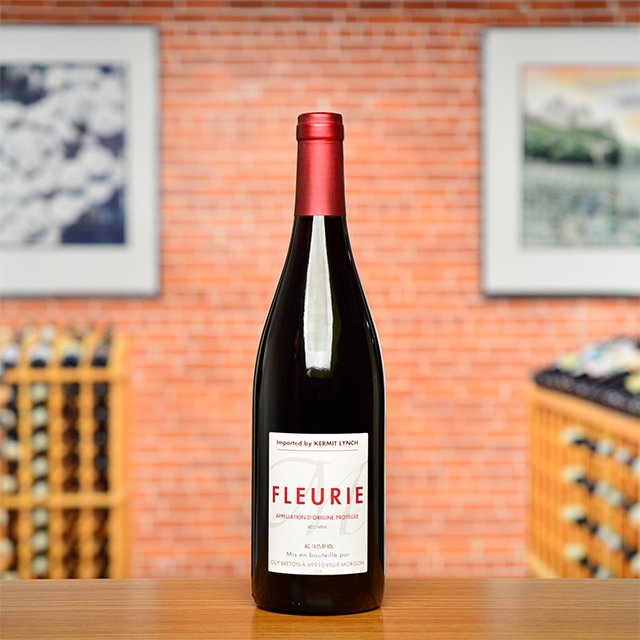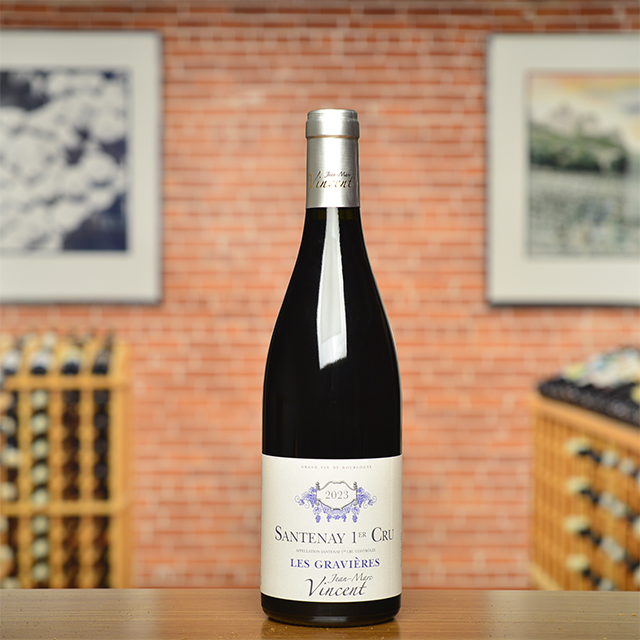Notify me
2016 Morgon “Les Charmes” Eponym’
Jean Foillard
The third and latest addition to Jean Foillard’s stellar lineup of Morgons comes from the Charmes lieu-dit, one of the highest parcels in the appellation. In contrast to the grandiose, deeply structured Côte du Py and silky-smooth Corcelette, this cuvée features a bit more crunch with lots of bright acidity and a leaner, more mineral profile. It nonetheless shares the satin texture of all Foillard Morgons, and should age similarly well for those willing and able to wait.
—Anthony Lynch
| Wine Type: | red |
| Vintage: | 2016 |
| Bottle Size: | 750mL |
| Blend: | Gamay |
| Appellation: | Morgon |
| Country: | France |
| Region: | Beaujolais |
| Producer: | Jean Foillard |
| Winemaker: | Jean Foillard |
| Vineyard: | 45 - 50 years; 1.5 ha total |
| Soil: | Schist, Granite, Manganese |
| Farming: | Organic (certified) |
| Alcohol: | 14% |
More from this Producer or Region

2024 Régnié “Grain & Granit”
France | Beaujolais
Here is a rich, bold Régnié, saturated with luscious fruit and earthy spice.

2022 Côte de Brouilly
France | Beaujolais
A relatively new addition to Guy Breton’s Beaujolais lineup, this exuberant Côte de Brouilly is flat-out delicious.

2018 Brouilly
France | Beaujolais
A generous dash of plump, sun-ripened fruit enveloping a granite core

2021 Beaujolais Blanc “Terrain Rouge”
France | Beaujolais
In classic Thévenet fashion, the wine is bright and energetic—a snappy Chardonnay that tastes like fresh green apple skin with a whisper of gentian.

2024 Morgon
France | Beaujolais
The domaine’s flagship bottling, crafted from vines averaging sixty years old; inviting aromatics, succulent flesh, juicy finish.

2023 Chénas “Chassignol”
France | Beaujolais
A finessed, mineral-driven beauty from hundred-year-old vines at the highest point in Chénas.

2024 Fleurie
France | Beaujolais
Guy Breton’s Fleurie is delicate, with buffed tannins and juicy fruit; it will leave your thirst slaked and your heart feeling light.

2023 Fleurie
France | Beaujolais
Light and living, charged with herbs, cranberry, and strawberry.

2023 Côte de Brouilly
France | Beaujolais
Alex Foillard fashions a Côte-de-Brouilly that strikes a deeper register, saturating the senses with tooth-staining fruit, gritty earth, and just a touch of the good funk.

2023 Chénas “Les Blémonts”
France | Beaujolais
Structured yet full of energy, with notes of blueberry, spice, and other things nice.
About The Producer
Jean Foillard
About The Region
Beaujolais

After years of the region’s reputation being co-opted by mass-produced Beaujolais Nouveau and the prevalence of industrial farming, the fortunes of vignerons from the Beaujolais have been on the rise in the past couple of decades. Much of this change is due to Jules Chauvet, a prominent Beaujolais producer who Kermit worked with in the 1980s and arguably the father of the natural wine movement, who advocated not using herbicides or pesticides in vineyards, not chaptalizing, fermenting with ambient yeasts, and vinifying without SO2. Chief among Chauvet’s followers was Marcel Lapierre and his three friends, Jean Foillard, Guy Breton, and Jean-Paul Thévenet—a group of Morgon producers who Kermit dubbed “the Gang of Four.” The espousal of Chauvet’s methods led to a dramatic change in quality of wines from Beaujolais and with that an increased interest and appreciation for the AOC crus, Villages, and regular Beaujolais bottlings.
The crus of Beaujolais are interpreted through the Gamay grape and each illuminate the variety of great terroirs available in the region. Distinguishing itself from the clay and limestone of Burgundy, Beaujolais soils are predominantly decomposed granite, with pockets of blue volcanic rock. The primary vinification method is carbonic maceration, where grapes are not crushed, but instead whole clusters are placed in a tank, thus allowing fermentation to take place inside each grape berry.
Much like the easy-going and friendly nature of many Beaujolais vignerons, the wines too have a lively and easy-drinking spirit. They are versatile at table but make particularly good matches with the local pork sausages and charcuterie. Though often considered a wine that must be drunk young, many of the top crus offer great aging potential.
More from Beaujolais or France
2024 Moulin-à-Vent “Vieilles Vignes”
Bernard Diochon France | Beaujolais
2024 Fleurie
Guy Breton France | Beaujolais
2022 Côte de Brouilly
Guy Breton France | Beaujolais
2021 Beaujolais Blanc “Terrain Rouge”
Jean-Paul et Charly Thévenet France | Beaujolais
2024 Côte de Brouilly
Château Thivin France | Beaujolais
2023 Moulin-à-Vent “Sous la Roche”
Domaine Thillardon France | Beaujolais
2023 Chénas “Les Blémonts”
Domaine Thillardon France | Beaujolais
2024 Chiroubles “Cuvée Léa”
Guy Breton France | Beaujolais
2021 Brouilly
Alex Foillard France | Beaujolais
2024 Côte-de-Brouilly
Nicole Chanrion France | Beaujolais
2024 Côte de Brouilly MAGNUM
Château Thivin France | Beaujolais
2024 Beaujolais-Villages
Alex Foillard France | Beaujolais
2024 Moulin-à-Vent “Vieilles Vignes”
Bernard Diochon France | Beaujolais
2024 Fleurie
Guy Breton France | Beaujolais
2022 Côte de Brouilly
Guy Breton France | Beaujolais
2021 Beaujolais Blanc “Terrain Rouge”
Jean-Paul et Charly Thévenet France | Beaujolais
2024 Côte de Brouilly
Château Thivin France | Beaujolais
2023 Moulin-à-Vent “Sous la Roche”
Domaine Thillardon France | Beaujolais
2023 Chénas “Les Blémonts”
Domaine Thillardon France | Beaujolais
2024 Chiroubles “Cuvée Léa”
Guy Breton France | Beaujolais
2021 Brouilly
Alex Foillard France | Beaujolais
2024 Côte-de-Brouilly
Nicole Chanrion France | Beaujolais
2024 Côte de Brouilly MAGNUM
Château Thivin France | Beaujolais
2024 Beaujolais-Villages
Alex Foillard France | Beaujolais
Kermit once said...

Kermit once said...
Great winemakers, great terroirs, there is never any hurry. And I no longer buy into this idea of “peak” maturity. Great winemakers, great terroirs, their wines offer different pleasures at different ages.
Inspiring Thirst, page 312

















